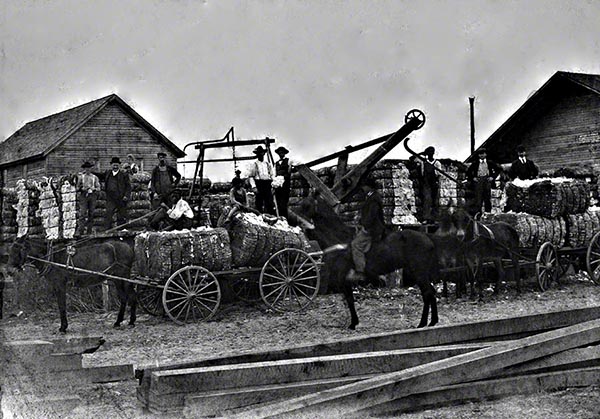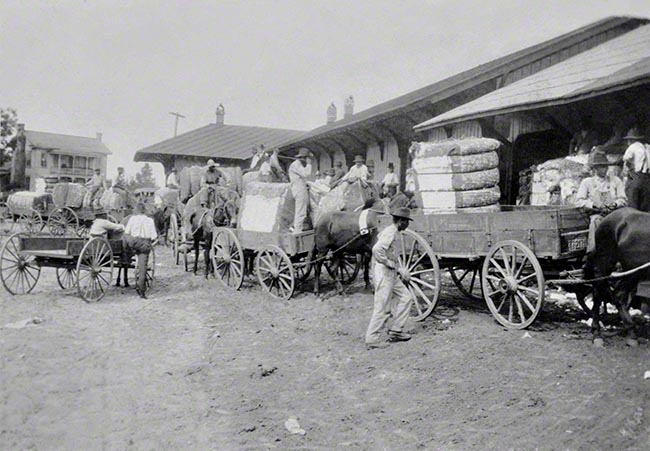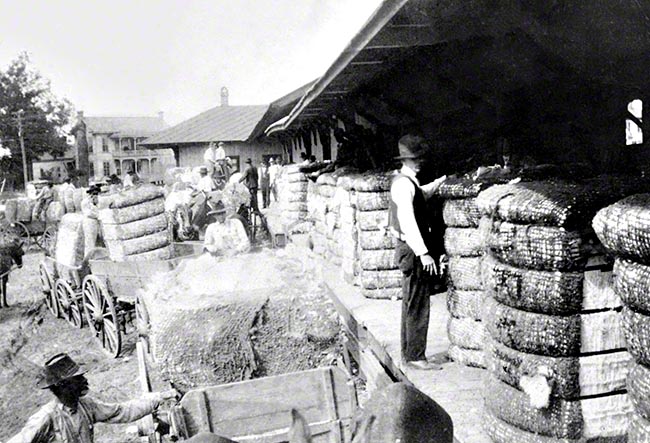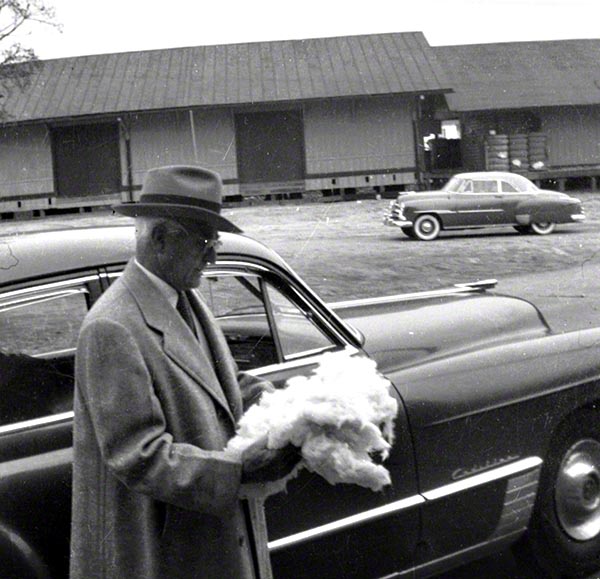Cotton -- The Original Money Crop
Before tobacco became the "money" crop in the area, cotton was king. It was the only area crop with an outside market of significance. Grown since before the Civil War, cotton provided the needed cash for farmers to buy the items that they could not grow, kill or make. Hard currency was in short supply.
After the Civil War, Henry Flowers Pitman and his son John Henry began trying to grow tobacco. When air-drying gave them an unacceptable leaf they switched to curing with heat in a wood-fired barn and became the first area farmers to produce flue-cure tobacco. It took almost twenty years from this point for tobacco to become a viable cash crop in the area. Cotton was the main source of farm income available.
Records show that cotton staple brought from 8 to 15 cents per pound in the mid-1890s to mid-1900s. The larger farmers owned small cotton gins to separate the cotton seed from the fiber. Those who did not have a gin hauled their crop to large ginners in Lumberton, Orrum, Fair Bluff or Rowland. When the railroad arrived in 1898 a gin was erected in Ashpole. By 1900 there were two.

Farmers unloading cotton at depot for shipment by brokers. Photo credit: "L" Floyd, used with permission.
Cotton buyers then came to Ashpole and established a purchasing station. E. V. McDaniel was one who moved to the village from the Baltimore area and began buying the fiber. The Southeastern Railroad gave him and others an economical way to ship the fiber to northern markets or to Charleston, SC for overseas shipment. When A. N. Mitchell moved to Fairmont in 1907, he soon began purchasing cotton as an agent for John F. Maybank Co. of Charleston, SC and later became an independent broker with access to many markets.
Cotton continued to be the primary cash crop for farmers until the arrival of the boll weevil in 1920. The insect preyed on the cotton bolls and could cost a farmer most of his crop. Initially there was no way to control the weevils. Between 1920 and 1925, there were more than 2,000 items in the Robesonian pertaining to weevil control. After a serious infestation in 1924, many farmers began looking at tobacco as a viable money crop.
Cotton was still profitably grown in the Fairmont area after the mid-1920s, but this was when tobacco farming replaced cotton farming as the primary revenue source for farmers. These photos show that the cotton market still thrived into the 1930s, 1940s and 1950s with A. N. Mitchell and his son Jack leading the way. When prices bottomed out at the beginning of the Great Depression, the Mitchells held what they had purchased rather than sell at a loss. Every storage warehouse and prizery that they owned was full of cotton awaiting the inevitable price recovery.

Unloading cotton at the ACL depot, mid-1930s. Photo credit: the late Jack Mitchell, Jr., used with permission.

Jack Mitchell inspecting recently purchased cotton being prepared for shipment, mid-1930s. Photo credit: the late Jack Mitchell, Jr., used with permission.

A. N. Mitchell inspecting recently purchased cotton, early 1950s. Photo credit: Paul Thompson Jr., used with permission.